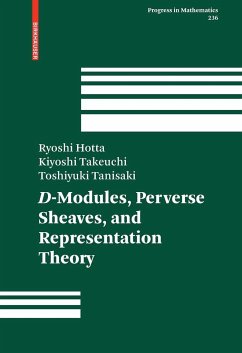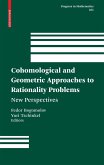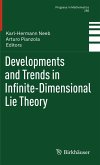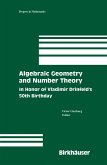D-modules continues to be an active area of stimulating research in such mathematical areas as algebra, analysis, differential equations, and representation theory.
Key to D-modules, Perverse Sheaves, and Representation Theory is the authors' essential algebraic-analytic approach to the theory, which connects D-modules to representation theory and other areas of mathematics. Significant concepts and topics that have emerged over the last few decades are presented, including a treatment of the theory of holonomic D-modules, perverse sheaves, the all-important Riemann-Hilbert correspondence, Hodge modules, and the solution to the Kazhdan-Lusztig conjecture using D-module theory.
To further aid the reader, and to make the work as self-contained as possible, appendices are provided as background for the theory of derived categories and algebraic varieties. The book is intended to serve graduate students in a classroom setting and as self-study for researchers in algebraic geometry, and representation theory.
Key to D-modules, Perverse Sheaves, and Representation Theory is the authors' essential algebraic-analytic approach to the theory, which connects D-modules to representation theory and other areas of mathematics. Significant concepts and topics that have emerged over the last few decades are presented, including a treatment of the theory of holonomic D-modules, perverse sheaves, the all-important Riemann-Hilbert correspondence, Hodge modules, and the solution to the Kazhdan-Lusztig conjecture using D-module theory.
To further aid the reader, and to make the work as self-contained as possible, appendices are provided as background for the theory of derived categories and algebraic varieties. The book is intended to serve graduate students in a classroom setting and as self-study for researchers in algebraic geometry, and representation theory.
From the reviews:
"A self-contained introduction to D-modules, with the aim of showing how they were used to solve the Kazhdan-Lusztig conjecture. ... present book can be used as a good reference on D-modules and on advanced representation theory of semisimple Lie algebras, but especially as a detailed account on the relations between them; in fact, in our opinion this is the first and very welcome complete work devoted to a mainstream research field (the 'Algebraic Analysis' approach to representation theory) which remains very active almost thirty years." (Corrado Marastoni, Mathematical Reviews, Issue 2008 k)
"The present book provides a reader-friendly treatment of the subject, suitable for graduate students who wish to enter the area. Part I of the book presents the theory of D-modules ... . The treatment in the book is quite complete ... . Part II provides the necessary background in the structure of semi-simple Lie algebras and their representations." (Dennis Gaitsgory, Bulletin of the American Mathematical Society, Vol. 47 (4), October, 2010)
"A self-contained introduction to D-modules, with the aim of showing how they were used to solve the Kazhdan-Lusztig conjecture. ... present book can be used as a good reference on D-modules and on advanced representation theory of semisimple Lie algebras, but especially as a detailed account on the relations between them; in fact, in our opinion this is the first and very welcome complete work devoted to a mainstream research field (the 'Algebraic Analysis' approach to representation theory) which remains very active almost thirty years." (Corrado Marastoni, Mathematical Reviews, Issue 2008 k)
"The present book provides a reader-friendly treatment of the subject, suitable for graduate students who wish to enter the area. Part I of the book presents the theory of D-modules ... . The treatment in the book is quite complete ... . Part II provides the necessary background in the structure of semi-simple Lie algebras and their representations." (Dennis Gaitsgory, Bulletin of the American Mathematical Society, Vol. 47 (4), October, 2010)








